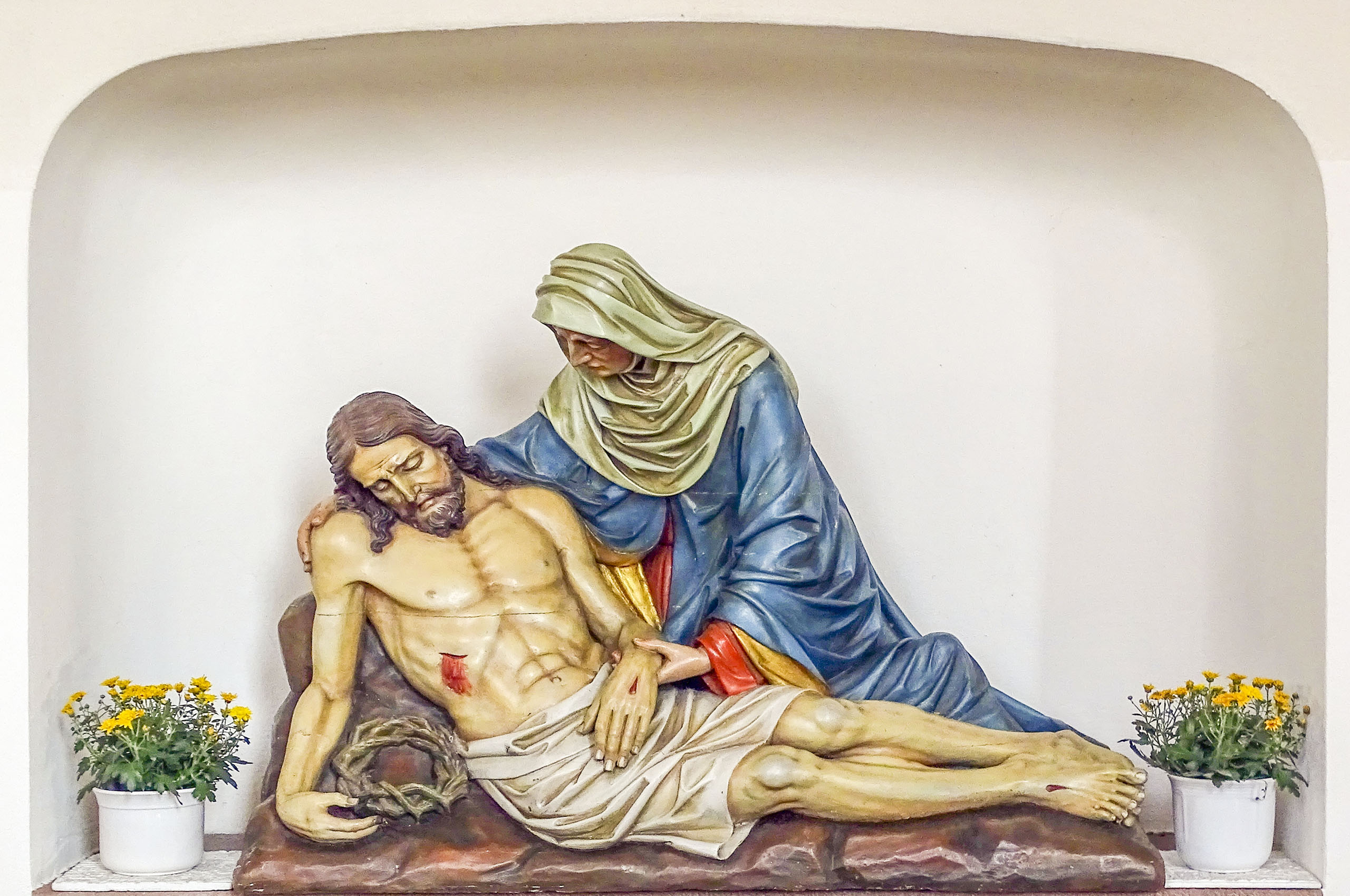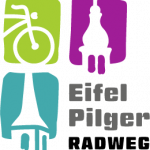Station:
Hupperath
The clearing village of Hupperath was first mentioned in documents in 1173 as Humbrecterod. The 50th parallel runs through the center of the village (primary school building).
The Jahrgeding was held once a year. All citizens had to attend. Anyone who did not appear was fined with a fined. All abuses, misconduct and irregularities committed by the citizens during the previous year were denounced, dealt with and punished accordingly. Patches, paths and fences were inspected and had to be put in order, and four times a year the chimneys were inspected. Fire hazard inspected. Everything had to be in order.
There is evidence that Hupperath has belonged to St. Paulin’s Abbey in Trier since 1225. In 1349, the parish became a branch of the parish of Großlittgen assigned. 1803, under Napoleonic rule, Minderlittgen and Hupperath were finally separated from Großlittgen again. Hupperath became a parish, Minderlittgen a branch village. The present church (49° 59′ 48 ˝ N / 6° 50′ 01˝ E) is a five-axis hall building with a three-sided chancel and ridge turret. It was built in 1786 (classicist style: 1770-1840). The church was extended by two axes in 1856. In 1863, the foundation stone was laid for the new rectory.
The patron saint of the church – St. Hubert – was not initially a saint. Hubertus went hunting on Good Friday, caught sight of a stag and aimed his crossbow at it. Suddenly the animal stopped, turned around and a shining cross appeared in its antlers. “Hubertus, I deliver you and yet you pursue me!”, a voice rang out. Hubertus then threw away his weapon, broke with his previous life and became a saint. Hubertus is still the patron saint of hunters today (legend).
In times of personal need, relatives send Adults and children to the seven Hupperath crosses to pray there. South of the church in the cemetery is the Cemetery cross in the form of a baroque crucifixion wayside shrine, built in 1719. Today, a neo-Gothic crucifix can be seen in the original crucifixion group.
It is remarkable that all seven crosses are still in Hupperath are to be found. Six crosses were already restored. The seventh cross will, like originally, newly built from wood and expected to be rebuilt on the same site in summer 2021 be erected at the “Wiesendamm”. A legend from Hupperath is about the Bruderheide, which lies between Bergweiler and Hupperath in a wooded area (750 m SE of the church). People tell each other about the interpretation of the name the following: Once there lived two brothers in the Loneliness, this one a Christian, that one a pagan. For some inexplicable reason, they once got into The pagan killed his brother. Since then, it has avoided humans even more than before and built caves and earth walls to protect itself from them. to be safe. These earth walls are still to see. Historically, however, the name may be interpreted to mean that this heathland once belonged to a monastery. The inmates of the monastery are referred to as brothers.

Sculpture of Mary Magdalene with the crucified Jesus Christ

Baroque crucifixion wayside shrine with a neo-Gothic crucifix in the church
Sources:
- Municipality of Hupperath (1973): Hupperath 800 years, chronicle of the 800th anniversary celebrations.
- Lieser, P. (2009): A village through the ages, PDF at hupperath.de
- Parish of Hupperath (p. 1167ff) in Hesse, G. & Wiseniewski, A. (1990): Wittlich-Land – Geschichte einer Verbandsgemeinde zwischen Vulkaneifel und Mosel, VG-Chronik.
Be aware – see , learn and be amazed
The church of nature The forest is like a church, so enter with devotion. There birds sing pious songs and you are alone with your God. There you will find cathedrals, wide halls, but also chapels large and small. Inside, moss-covered benches invite you to quiet prayer. Look around you in the circle, where the forest giants stand proudly. You will see the omnipotence of your God in every tree and shrub! You will understand the lisping of the trees, the voices of the birds all around! There is a deep magic in the forest that strengthens the heart when it is heavy for you. So if you want to forget a sorrow, yes, even understand a grace, just go into the middle of the forest, you’ll always find the right path! The gates are always open to this cathedral in the airy grove, you can weep, pray and hope there, and also forget – just enter!
Text / free use: Georg Graf zu Münster (1776-1844): The Church of Nature
